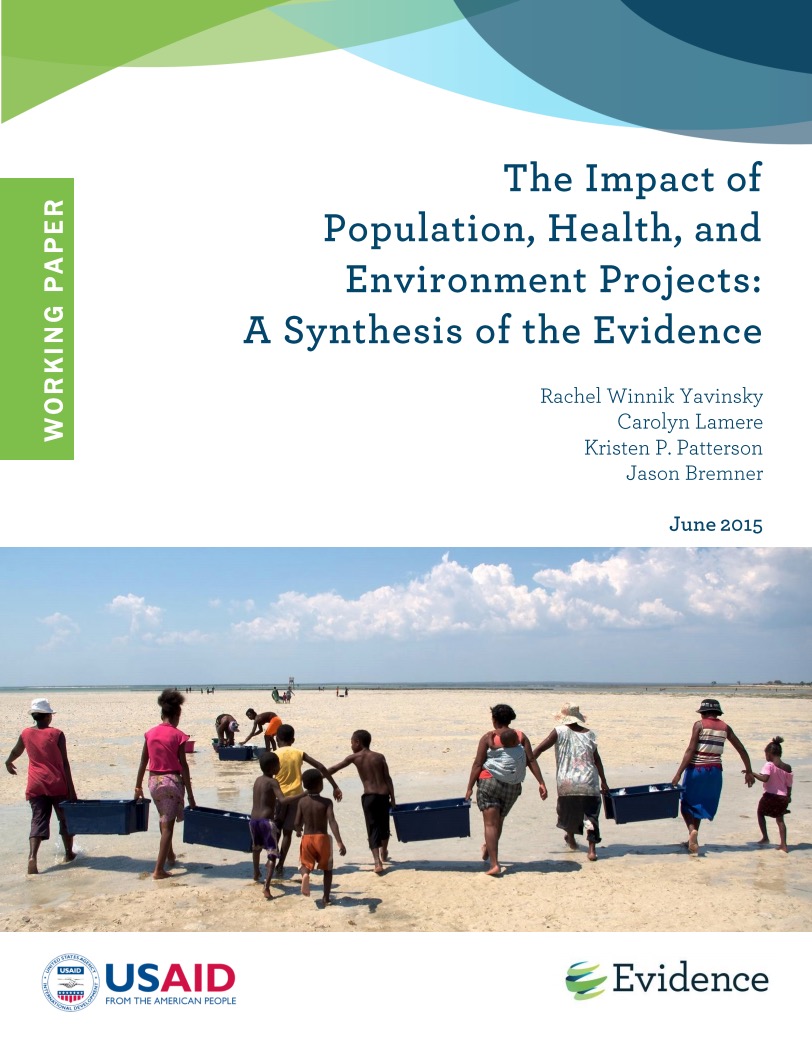PRB Webinar: The Impact of PHE Projects: A Synthesis of the Evidence
A new working paper by the Evidence Project synthesizes the available research from the latest generation of population, health, and environment (PHE) projects, providing a detailed account of the benefits of integrated projects and gaps in the evidence base.
Integrated programming to address both social and environmental challenges dates to the mid-1980s, when integrated conservation and development projects began. PHE is a subset of these integrated programs that aims to improve access to primary health care services, particularly family planning and reproductive health, while also supporting sustainable livelihoods and helping communities conserve their critical ecosystems and natural resources.
“The Impact of Population, Health, and Environment Projects: A Synthesis of the Evidence,” reviews reports from almost 40 integrated projects. The authors find that projects consistently collect data on family planning and most report an increase in family planning use.
“Integrated programming offers several family planning benefits,” explains Jason Bremner of the Population Reference Bureau and a co-author of the report. “First, many of these projects are in rural areas so family planning services are now reaching very remote populations. Also the integrated approach encourages men to get more engaged in family planning.” Dr. Bremner also points out that integrated programming encourages women to get involved in livelihoods and natural resource management.
Although the integrated projects studied tend to document family planning impacts, they are less likely to document environmental, livelihood, and resilience impacts, despite the availability of measurement tools. Moreover, managers of integrated projects find it challenging to provide evidence of the added value of integration. The authors identify the need for implementation science to address gaps in evidence, such as cost-savings and efficiency, and the larger effects of family planning on environmental, livelihood, and climate change outcomes.
“To make a strong case that family planning has a larger impact on environment and development sectors, we need to be collecting and analyzing the data to show this, and communicating the evidence effectively,” notes Clive Mutanga, USAID’s Family Planning and Environment technical advisor.
This report provides donors, researchers, and practitioners with a range of ideas for guiding the next generation of integrated projects in collecting the evidence to make the case.


 ">
">